Conference Feedback
At last year's EPRA Conference, sentiment toward the sector was notably optimistic. U.S. 10-year government bond yields had just declined to 3.6%, and transaction activity was showing signs of recovery. Fast forward to this year's annual conference in Stockholm, and the backdrop has shifted: long-term interest rates in both the U.S. and Europe are higher than a year ago, and the geopolitical environment has proven more volatile than expected. Appropriately, the 2025 conference theme “The Power Shift” reflected the ongoing focus on geopolitical uncertainties. Despite this challenging macroeconomic setting, numerous discussions and meetings during the event reaffirmed to us the resilient European real estate fundamentals, visible in positive rental growth, and recovering property valuations.
A recurring topic at EPRA Conferences is the scale of the listed property sector and strategies to foster its growth. Holding the conference in Stockholm was particularly fitting, given Sweden's vibrant listed real estate market. The country accounts for 14% of listed real estate market capitalization in the Developed Europe Index and offers investors a wide selection of listed companies. Swedish participants emphasized the sector's transparency, a well-developed local capital market supported by a pension system with a high equity allocation, and strong access to capital as success factors.
The U.S. REIT market, given its successful growth to a market capitalisation of USD 1.4 trillion, often serves as a template for Europe. However, scaling up in Europe remains more complex due to fragmentation with numerous national laws and regulations. EPRA continues to advocate for a harmonisation and mutual recognition of REIT regimes, but progress is uncertain and likely to take time. Another structural factor is the relatively smaller share of non-traditional property sectors in Europe, such as healthcare, student housing, self-storage, and data centers. EPRA estimates that non-traditional sectors could account for 26% of the Developed Europe index by 2035, up from 11% at the end of 2024. While the near-term IPO pipeline remains limited, private equity firms have built significant platforms that could eventually support future listings.
Notably, two major U.S. REITs—Digital Realty and Realty Income—attended the conference, both with meaningful European exposure. Realty Income, a leading net lease REIT, has expanded its European portfolio to USD 13 billion and aims to grow further. The fact that Realty Income is currently prioritizing acquisitions in Europe over the US is a strong testament to the attractive opportunities available in the European market. Interestingly, it was noted that U.S. investors may, in some cases, face more favorable tax and regulatory conditions than their European cross-border counterparts—highlighting once again the need for greater regulatory alignment.
Finally, M&A activity emerged as a key theme this year. Private equity continues to target listed companies trading at steep discounts to NAV, while consolidation among public companies is also gathering pace. Encouragingly for the listed sector, roughly 60% of M&A transactions over the past five years have been public-to-public deals rather than take-privates, supporting the creation of larger, more liquid investment vehicles.
We met with healthcare REIT Aedifica (AED), which is in the process of merging with Cofinimmo, creating a EUR 12bn portfolio focused on care homes. Regionally, there is strong overlap, while Cofinimmo adds further exposure to France and Italy. Estimated operating synergies of EUR 16m and lower financing costs are expected to drive mid-single-digit EPS accretion of the merger. Demographic trends across Europe where the share of the population aged 80+ is projected to rise from around 6% today to over 10% by 2050, support long-term demand. Current operations have also improved, with average occupancy at AED's care homes back to 90%. However, some markets, like Germany are still lagging with occupancy just above 85% and more challenged rent coverage ratios. Aedfica's assets are leased on long-term net lease contracts, with average unexpired lease term of 18 years, to care home operators which can be private as well as public, providing stable and predictable cashflow.
While much of the sector continues to face a suboptimal cost of equity, with shares trading at significant discounts to NAV, there are exceptions, such as Cibus, a Swedish-listed company with a large portfolio of grocery-anchored properties across the Nordics and, more recently, the Benelux. Cibus benefits from stable cashflows, supported by grocery tenants. The company recently raised SEK 1 billion in equity, of which 90% has already been allocated toward acquisitions. Its clear strategy and high transparency underpin its positioning for continued growth, which should ultimately translate into rising dividends. Consistent with many Swedish firms, Cibus carries shorter average debt maturity of 2.5 years compared to continental peers. This has been a challenge in recent years as higher financing costs pressured earnings, while peers with longer-dated fixed debt were more insulated. Going forward, this will be a benefit as Cibus's in-place cost is already at the same level it can refinance, while many peers will continue to face headwinds from higher refinancing costs.
Leverage reduction was a priority for many European companies as interest rates began to rise. We met with Xior, a Student Housing REIT, which had rapidly expanded its portfolio from EUR 200m in 2015 to to EUR 3.8bn today. The company has scaled back its development pipeline and reduced leverage from nearly 55% in 2023 to below 50% now through disposals and capital raises. An operationally strong performance with annual like-for-like rental growth above 5% since 2023 helped to keep earnings per share stable from 2023 to 2025. Booking rates for the upcoming academic year confirmed a “full” occupancy of 98% as in the previous five years. With markets in continental Europe still undersupplied, Xior is confident it can continue to pass through inflation in the form of higher rents. Importantly, the acquisition of Basecamp has significantly enhanced its operating platform, creating a competitive moat for the future in what is an operationally intensive business.
Southern Europe has recently shown improved economic growth. From a REIT perspective, listed opportunities in the region remain limited. We met with IGD, an owner of Italian shopping centers, which struggled to refinance in 2023. Since then, the company has refreshed its board and management team, introduced a new business plan, started a disposal program for non-core assets, primarily in Romania and extended its debt maturities. Encouragingly, IGD has resumed dividend payments, supported by improving operational metrics: tenant sales were up 1% and footfall increased 3.9% in H1 2025. The company's 2027 business plan targets a 35% increase in FFO, driven by top-line improvements.
Hotel Property Tour with Pandox
We visited three hotels in Stockholm owned by Pandox. Pandox is one of only two pure-play hotel companies in the EPRA index. The core of Pandox's model is owning hotels and leasing them to experienced hotel operators under long-term, revenue-based leases. At times, Pandox also operates hotels directly to reposition or refurbish assets, which gives it greater flexibility in transforming underperforming properties. Two of the hotels we visited were operated by Scandic, which has a long-standing relationship with Pandox and is its largest tenant, accounting for 31% of total rooms.
The first hotel was a Scandic Go, a newly launched brand positioned as an affordable option targeting urban travelers. The concept is more self-service oriented, with a reduced F&B offering. Scandic Go offers rooms as small as four square meters for SEK 790 (EUR 72) per night, which are among the most sought-after by guests. A surprise to many investors was the popularity of underground rooms without windows, called “cabinets,” which are common in the market and favored by business travelers. The hotel, converted from a Best Western, is in its first season under the new brand and achieved occupancy rates of up to 90% in August.
The second hotel, Scandic Malmen in Södermalm, is located in central Stockholm and has undergone a major refurbishment over the past 18 months. It now combines 1950s retro style with modern design. All rooms have been renovated, and the ground floor has been upgraded with new restaurants and bars. In addition, 23 rooms were added, bringing the total to 355. Given the abundance of restaurants in the area, the strategy is not to compete directly on food but to emphasize the hotel's drinks offering.
The third hotel was the Hilton Stockholm Slussen, which has extensive conference facilities including a 300-seat auditorium. About 50% of its guests are international, with U.S. travelers making up around 30%. Pandox is currently developing refurbishment plans for the property and sees substantial upside, also because the hotel is located next to Slussen, one of Stockholm's largest redevelopment projects. The project will significantly improve the area by reducing car traffic and creating a more pedestrian- and cyclist-friendly environment, with cafés, restaurants, a new park, and an underground bus terminal. Construction began in 2016 and will be completed in stages between 2025 and 2028.
Scandic Go, Sankt Eriksgatan - Cabinets & Family Room
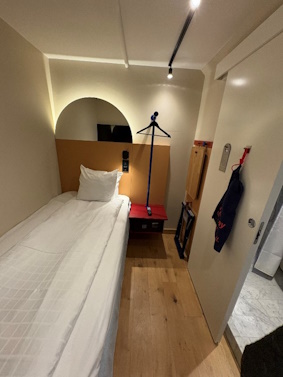 | 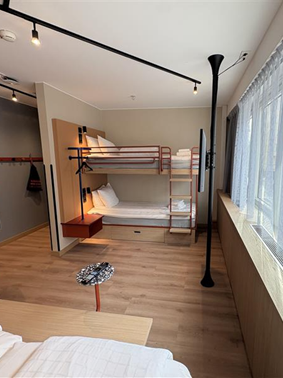 |
Scandic Malmen in Södermalm - Lobby & Room
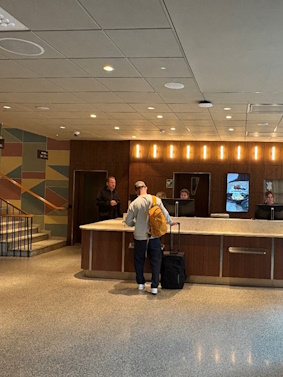 | 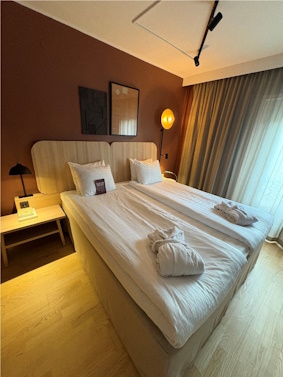 |
Hilton Stockholm Slussen - Auditorium and view on Slussen redevelopment
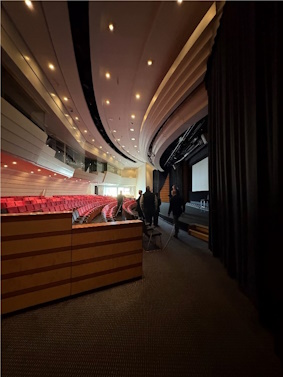 | 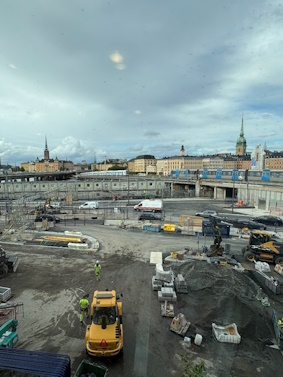 |
Download the PDF version of the report here
